Want to jump straight to the answer? The best conference call service for most people is Nextiva or RingCentral.
The best conference call services support quick calls, video conferences, team collaboration, and even 100-person webinars.
Regardless of your budget or team size, you’ll find a perfect solution below. This guide contains in-depth reviews on the best free and paid conference call services.
The Best Conference Call Services
- Nextiva — Best overall
- RingCentral — Best for video conferencing
- GoToMeeting— Best for conference rooms
- Phone.com — Most affordable
- ClickMeeting — Best for webinars and presentations
- Zoom— Best for large teams
- Google Meet (Formerly Google Hangouts) — Easiest to use
- Webex — Best for collaboration
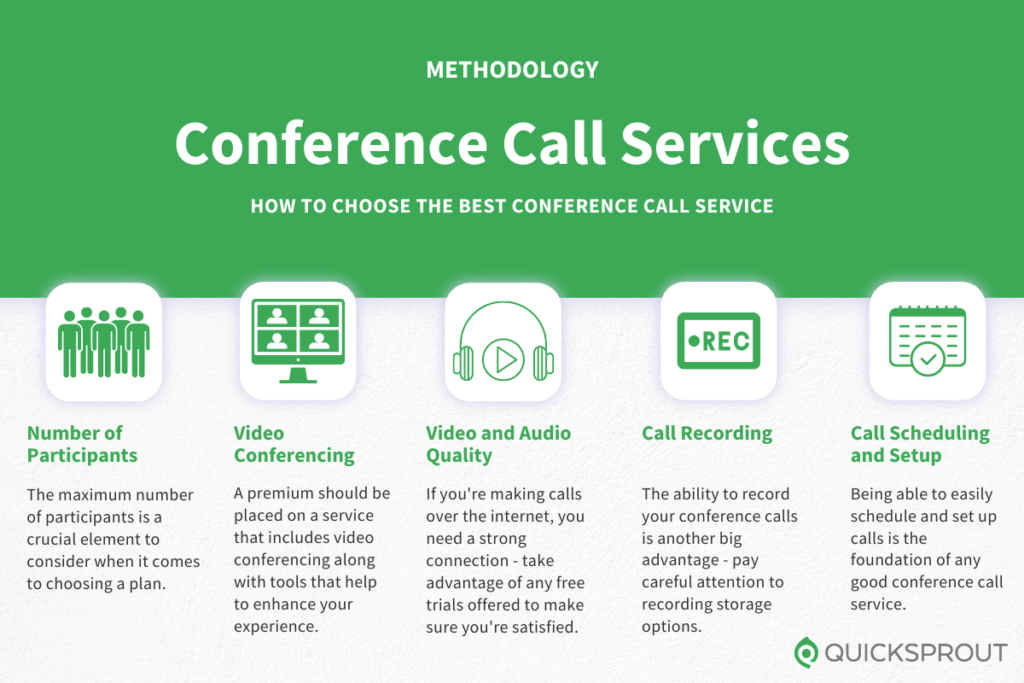
I looked for providers that offered VoIP (voice over internet protocol), which means you can make calls over the internet instead of a landline. This option costs less and is much easier to manage than a traditional phone line.
Still, if you want to use your traditional phone service, most of the options on my list have you covered.
But which is right for your business? I’ve reviewed each service in detail below to help you compare them.
Nextiva — Best Overall
- Rock-solid reliability
- Carrier-grade data centers
- Voice & video conferencing
- 24/7 support
If you can’t gamble on conference call audio quality, go with one of the most reliable networks out there—Nextiva.
They offer a complete suite of business communication tools at a competitive price.
For less than $30 per month, you’ll get unlimited voice and video conferencing with HD audio. I like it because you’re getting a full business phone system, complete with the ability to route calls, a mobile app, and voicemail to email.
Even if you are just using Nextiva primarily for conference calls, you’ll appreciate the strength and resilience of using their network. Especially when your conference calls are how your team works together on projects or presents your offerings to potential clients.
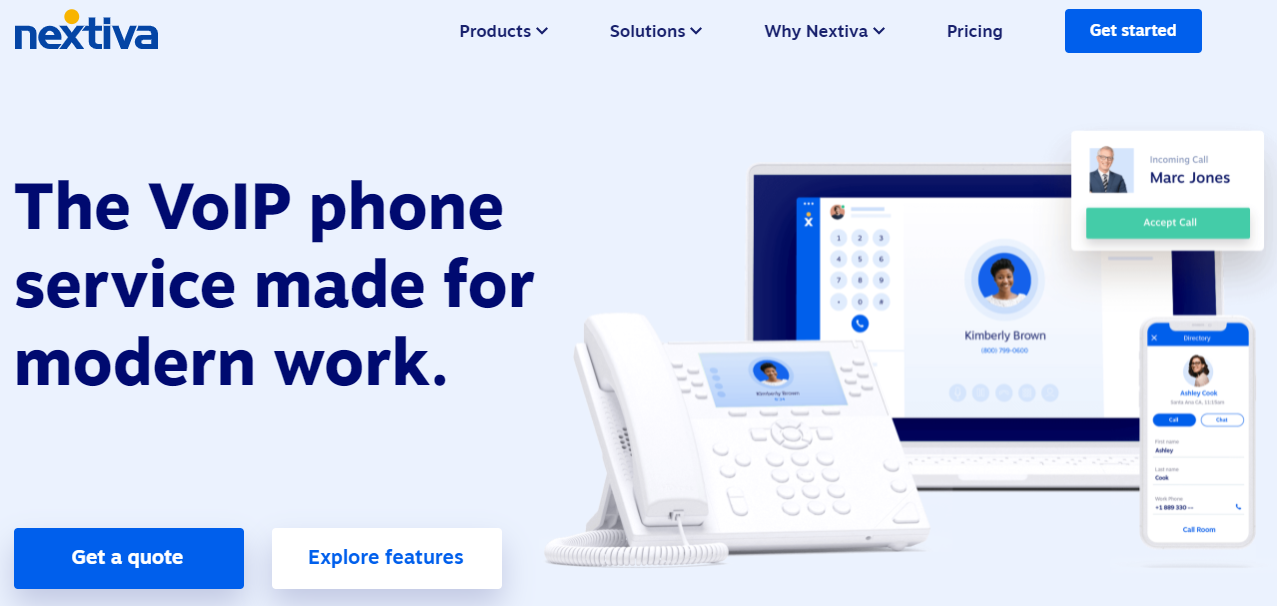
Nextiva is a recognizable name in this space. And with that cachet comes technology to match.
With eight points of presence (POPs), you’ll never have to worry about high latency because your VoIP calls are connected to the nearest POP between you and whomever else is on the line with you.
Plus, Nextiva’s infrastructure is carrier grade, meaning its data centers are rated for high availability and built to handle periods of intense usage.
But even that can’t guarantee everything will be perfect 100% of the time. Not to worry—Nextiva’s support is also top-notch.
Their representatives are available 24/7 and go the extra mile to solve emergent problems or help you get the most out of your VoIP system. They can even walk you through extra steps to take with your own tech stack to ensure even better conference call quality.
Nextiva offers video calling and conferencing calling as part of their business phone system. There are several plans to choose from, but you will need to pick the Professional, Enterprise, or Ultimate plan in order to access these features.
Below you’ll see the pricing for Nextiva’s phone service, excluding the Essentials plan, which doesn’t offer conference calling.
**Nextiva runs promotions often and you can save even more on the plans below. Click here for the current sale prices.
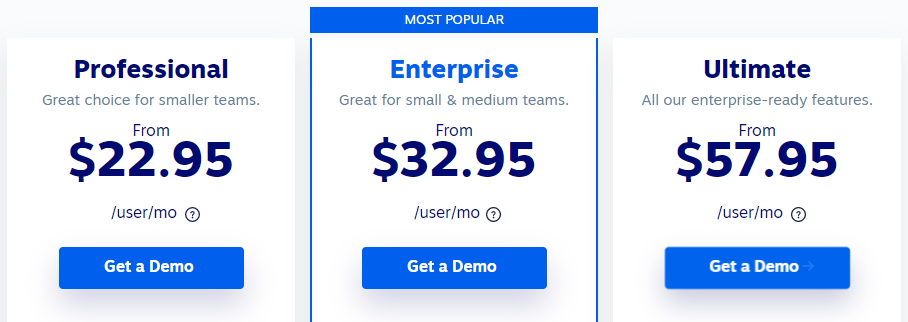
The Professional plan limits your conference calls to 40 people–the other two plans allow unlimited participants. You can, however, have up to 250 participants on a video conference with the Professional plan.
If you don’t want to worry about limits at all, an upgrade to Enterprise allows for any number of participants on either conferencing form. Of course, quality may diminish if your network isn’t up to handle hundreds of people on a single call, so make sure your infrastructure can bear it.
You can run a free speed test on Nextiva’s website to simulate your network’s call quality for up to 200 phones.
Get the best conference call quality and reliability in the biz—take a 7-day free trial started with Nextiva today.
RingCentral — Best for Video Conferencing
- Free up to 100 participants
- Video, screen share, & messaging
- VoIP phone service plans
- Small to enterprise solutions
RingCentral includes video conferencing all but their most budget-friendly paid phone plans. That’s ideal for any work-from-home business.
There’s free video conferencing software out there that is great for personal stuff, but businesses need a secure connection. RingCentral provides free video conferencing for up to 100 people and unlimited audio conferencing.
Because they are a VoIP phone service, all of this takes no more than an Internet connection. Start conference calls from your phone on the RingCentral app, or from the web app on your computer.
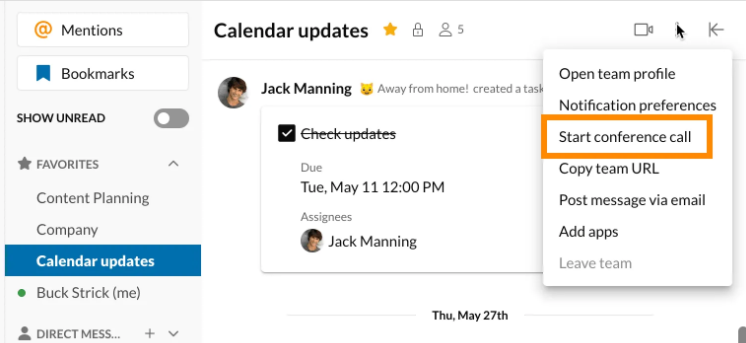
The free plan competes well with others on this list. While you’re capped at 40 minutes per meeting, you can still have up to 100 participants. That’s great for scrappy startups.
You can easily add-on larger meeting options to your plan if you upgrade to one of their several paid plans that start as low as $19.99/month.
The system offers nearly every calling, collaboration, and mobile feature businesses would want from a phone system. Since it is housed in the cloud, there is no equipment to install, and they take care of all the maintenance and upgrades.
RingCentral also has stout enterprise solutions and you can save some money by bundling RingCentral Meetings with a VoIP business phone plan.
Click here to visit RingCentral and get started for free.
GoToMeeting — Best for Conference Rooms
- Free 14-day trial
- HD video conferencing
- No time limits for meetings
- Mobile app and Slack integration
GoToMeeting offers straightforward, high-quality solutions for small business conference calls without a bunch of distracting features.
One standout feature is their all-in-one hardware and software kit. They’ll send you everything you need to transform any physical room into a smart conference room.
It doesn’t matter if you have a home office or a massive 12-person boardroom. You’ll be able to create a video and phone conferencing solution with all the screens and audio tools you need for your business. That makes it perfect for teams of all sizes.
Unlike some of the other paid conference call solutions on the market, GoToMeeting does not have a basic free plan. However, you can still try it out at no cost with a 14-day trial.
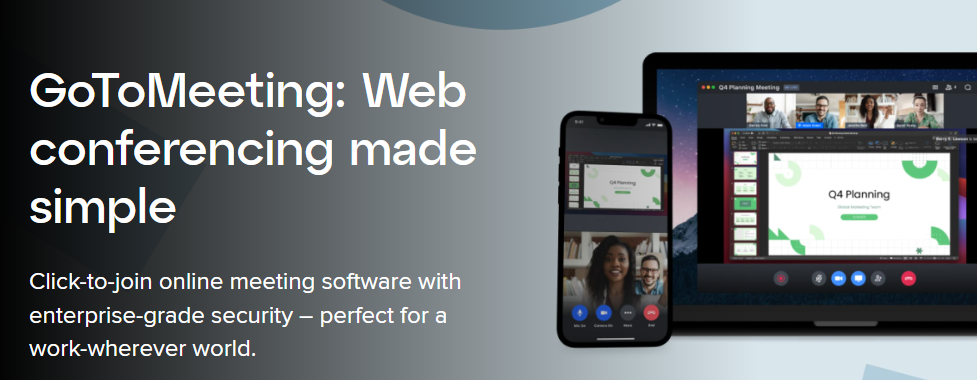
GoToMeeting has three plans:
- Professional — Starting at $14 per month
- Business — Starting at $19 per month
- Enterprise — Custom pricing
The Professional and Business plans can host conference calls with up to 150 and 250 participants, respectively. The Enterprise plan is for up to 3,000 participants.
All plans come with these basic features:
- HD video conferencing
- Screen sharing
- Dial in conference lines
- No limits on meetings
- No time limits for meetings
- Personal meeting rooms
- Business messaging
- Mobile app
- Slack integration
- Salesforce integration
- 24/7 customer support
GoToMeeting also has unlimited recording capabilities and automatic transcriptions of your conference calls.
Performance is where GoToMeeting stands out over the competition. Lots of free and paid conference call services out there fall short with audio quality. But GoToMeeting customers rave about the crystal clear sound and connection of their conference calls.
GoToMeeting does not have some of the more advanced features that we’ve seen from other providers. But, personally, I like the simplicity.
You don’t need bells and whistles to make effective conference calls. Plus, I think the price points for these plans provide a great value for the benefits.
Overall, it’s a great choice for those of you who manage large remote teams or if your team is able to work in a physical location—and want to upgrade your conference room.
Click Here to Try GoToMeeting for Free.
Phone.com — Most Affordable
- Best value for small-scale calls
- Starts at just $10.39/user per month
- Free and unlimited conferencing on all plans
- Includes texting & dozens of features
Phone.com strikes a perfect balance for smaller teams that need always-available voice, video, and messaging. They fill in that much needed “middle-of-the-road” option for most people.
That doesn’t mean they skimp on features. They offer a great balance between value and providing you with the tools you need.
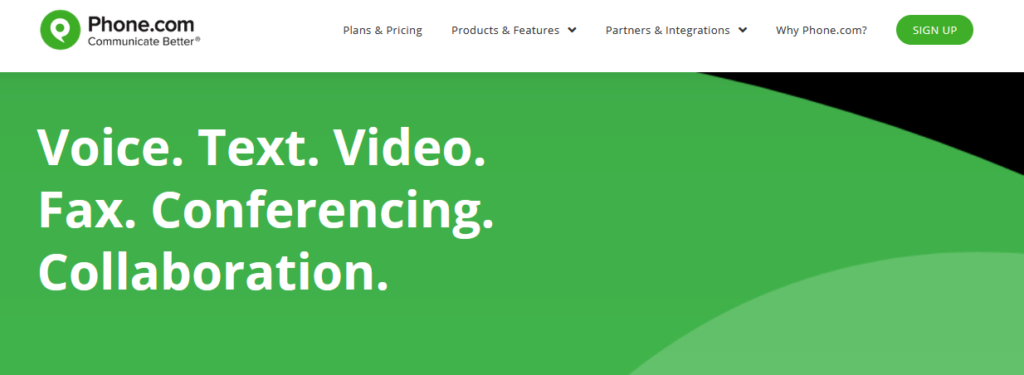
Phone.com starts at $10.39/user per month for its Basic Users plan. You get 300 pooled minutes, 1,000 pooled text messages, and video conferencing for up to 10 people.
Take just one step up to the Plus Users plan–$19.99/user per month—and you won’t have to worry about limits at all. There, you get unlimited minutes and text messages, plus video conferencing for up to 25 participants and video recording.
Notice that the participant limits are just for video calls. A lot of teams and companies prefer video conferencing, especially now with more remote workers involved. But if you just need voice conference calling some or most of the time, Phone.com is even more appealing.
On every plan, you get a free conference bridge that can handle up to 500 participants. And, audio conferencing doesn’t eat into your monthly minute limits. So, that means if you’re doing a bunch of inbound and outbound calling, you can settle on the lowest Phone.com pricing plan and be just fine for all of your conferencing needs.
That makes Phone.com a steal for smaller teams—especially ones with team members spread all over the map—who lean more heavily on conference calling than any other voice product.
Another nice aspect of choosing Phone.com is that you can mix and match plans. This is a big deal because it allows you to get cheap plans for some users and premium plans for people who need unlimited minutes or advanced features.
With most conference call and phone service providers, you have to select a single plan for your whole company–Phone.com lets you outfit your teams with exactly what they need. You’re never paying for more than people are using.
The Basic Users plan doesn’t skimp on additional features, either. It also comes with:
- Video screen sharing
- Document sharing
- Email notifications for voicemails (transcription only available with Plus Users)
- iOS and Android mobile apps
- HD voice and video
- Call logs
- Call notifications
And that’s just a sampling of the standard features.
You can get started today stress-free because of Phone.com’s 30-day money back guarantee. Don’t wait any longer searching for a conference calling solution, your smaller team has found your perfect fit in Phone.com.
ClickMeeting — Best for Webinars and Presentations
- Webinar solution w/ conference calls
- Highly collaborative & engaging
- Good for onboarding & training
- Prices start at $25/month
ClickMeeting is a bit different from the others on our list. That’s because it’s a webinar solution that gives you a great way to conduct conference calls as well.
It might not seem like a drawback — but it’s actually pretty great if you often hold web events. Not only will you have a way to meet and collaborate with your team, you’ll also have a lead generation engine with webinars.
Their collaboration software is really great for teams and distributed companies. As such, it should stand out to any remote workers out there.
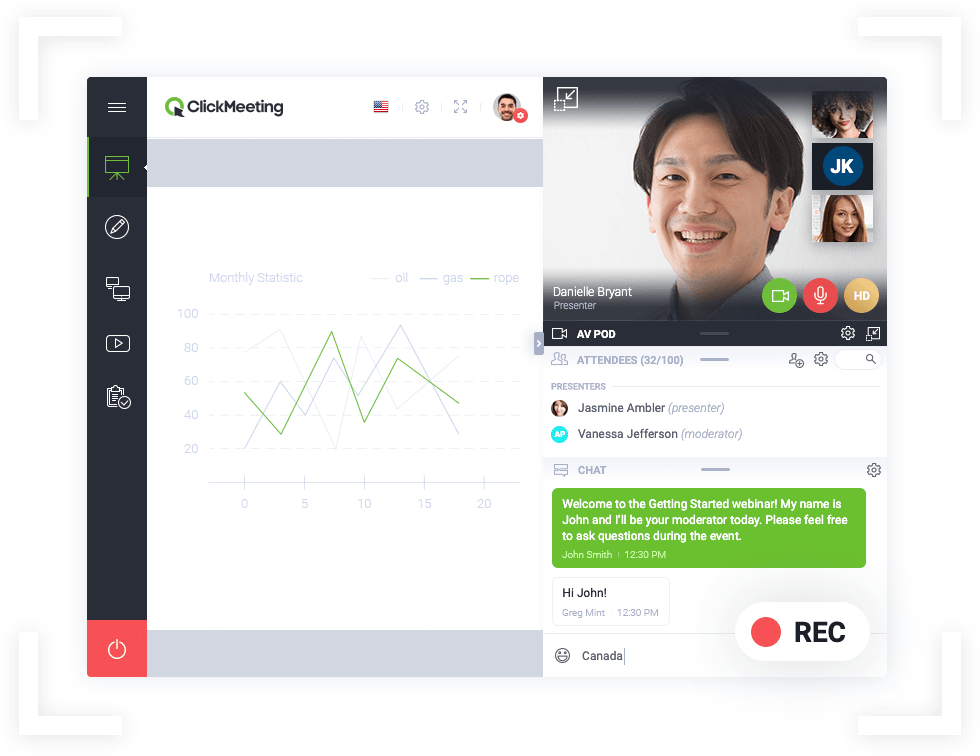
When it comes to conference calls, ClickMeeting’s robust set of presenting and agenda tools allows you to conduct highly engaging, fruitful meetings with your team, clients, customers, and more.
It’s a perfect way to let your team walk away with actionable insights as well as easily onboarding and training new employees.
Since it is also a webinar tool, it does come with more features geared towards sharing insights. As such, if you’re looking for a pure conference call tool, you might want to look elsewhere.
However, this is still a fantastic tool if you’re looking for a great conference call solution that’s multifaceted and flexible when it comes to your use.
The customization they offer really facilitates viewer interaction with the material a presenter is discussing. Overall, I’d say it’s great for agencies, teachers and other education professionals.
Their webinar solution also integrates with PayPal, allowing customers to purchase access to your webinars easily and securely.
If you need a highly-customizable webinar and collaboration tool, and also need something that goes beyond conference calling, this is the service for you.
Pricing starts at $25 per month and is billed annually. However, it does come with a free 30-day trial to test it out.
Zoom — Best for Large Teams
- Free up to 100 participants
- Pro plan starts at $14.99 mo
- HD video conferences
- Cloud recording features
>> Compare Quotes
Zoom shot up in popularity recently—and for good reason. It’s reliable, affordable, and it’s incredibly easy to use.
The company has grown considerably, and now offers some very attractive corporate conference call solutions.
This cloud-based system offers a wide range of free and paid options to accommodate both individuals and businesses of all sizes.

That said, Zoom is best for large or enterprise teams. For $199.99 per year, you can have up to 300 participants in a single call. That’s larger than any of the other providers (outside of enterprise-level plans).
You’ll get tools for recording and transcribing conference calls, as well as SSO and managed domains to ensure that calls are secure.
On top of that, you’re going to get world-class performance in audio and video. There’s perhaps no better conference call service out there that offers such sharp image quality with less lag and dropped calls.
There’s a reason they became a major part of society during the pandemic after all.
Their first paid plan should be enough for most of you. You could always upgrade to Zoom Business as your company scales.
Zoom stands out amongst its competitors for video conferencing and cloud conferencing rooms. You’ll definitely want to lean toward this service if you plan to make professional video presentations via conference calls.
While it’s not for everyone, Zoom Enterprise is a top solution for those of you who fall into that category. Big companies like Uber, Zendesk, Ticketmaster, GoDaddy, and Pandora are just a handful of brands that rely on Zoom for conference calling solutions.
Zoom has an extensive knowledge base as well as 24/7 phone support and live training with some of the plans. But the audio quality can be a bit unstable at times.
Google Meet (formerly Google Hangouts) — Easiest to Use
- Free with your Gmail account
- Conference with up to 25 people
- Google Calendar integration
- Best used with a G Suite account
>> Compare Quotes
Google Meet is a relatively new voice and video conferencing platform that offers the kind of reliable, top-quality service you would expect from a Google product.
You may be familiar with Google Hangouts Meet and Hangouts Chat. These were formerly two separate services but have been rebranded as Google Meet.
It’s free to use, and a great option for anyone with a Gmail account (which is basically everyone).
It automatically connects with your Gmail account and contacts too — so it can be truly seamless. It has Google Calendar integration as well, which makes it easy to schedule meetings with other users.
To set up a conference call, just use your browser, chrome extension, or mobile app.
While it doesn’t come with all the bells and whistles that some of the other offerings on this list do, it does shine in sheer simplicity. To set up a call, all you need is a Google account— and that’s it. In fact, if you’re reading this right now, you likely can set up a call in less than 10 seconds.
Once you set it up, all you have to do is send the Google Meet link to anyone you want to join the call.
This service is usually used for one-on-one meetings, but can be a viable option for smaller conference calls of up to 25 people. Google Hangouts makes it easy for you to share your screen and facilitate video conference calls as well.
To get the most out of Google Meet, you need to have a G Suite account, which starts at $6 per month. You might already be using G Suite, and if you’re not, you should start.
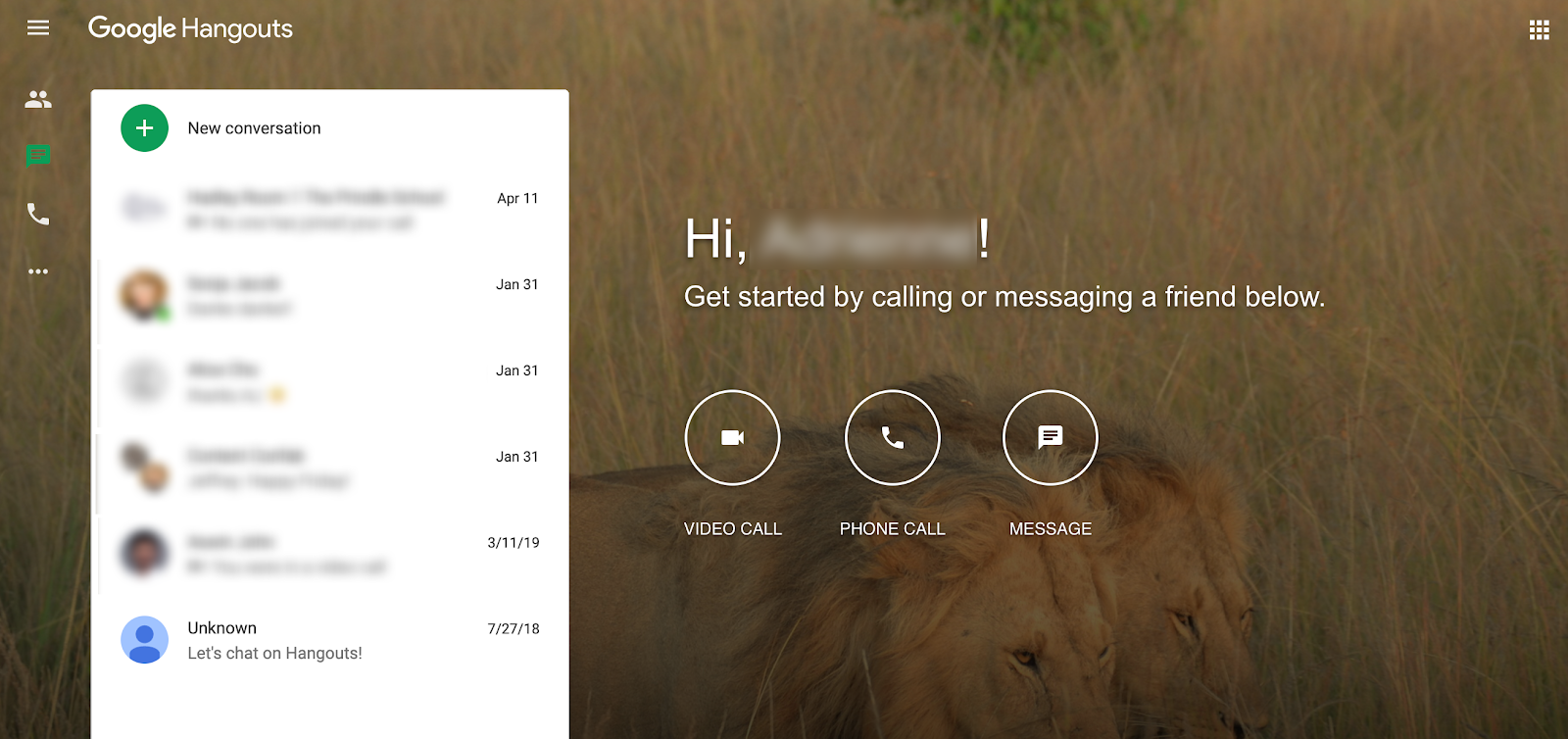
While Google Meet is simple, straightforward, and easy to use, it definitely has a few drawbacks that you should keep in mind.
For starters, there is no customer support if you’re using it for free. So if you have a problem or question, you’ll need to browse through user forums instead. There is no recording feature either, which seems to be standard with most of the other conference call services out there.
Personally, I use Google Meet at least once or twice per month. Most of those meetings are just with a handful of people. Audio quality issues are common. But overall, it’s quick, easy, and free to make conference calls with this service.
Webex — Best for Collaboration
- Free up to 50 participants
- Cloud collaboration features
- High-quality audio & video
- Cloud storage
>> Compare Quotes
I recommend Webex highly for teams, especially those that are wary of using cheap conference call software.
Webex is a Cisco product built with the latest technology. Video and audio quality are exceptional, as are the security and privacy protections. The Basic Webex Suite is HIPAA compliant. HIPAA compliance doesn’t typically come free, but such are the benefits of going with Cisco.
The Basic Webex Suite is free for up to 100 participants, and comes with a deep feature set for scheduling, team messaging, and in-conference collaboration. Be aware that the free plan does cap calls at 50 minutes, which is still generous.
It’s easy to share files, share screens, take polls, or pop into a breakout room. Webex is very user-friendly. This is not a Cisco product from 2002.
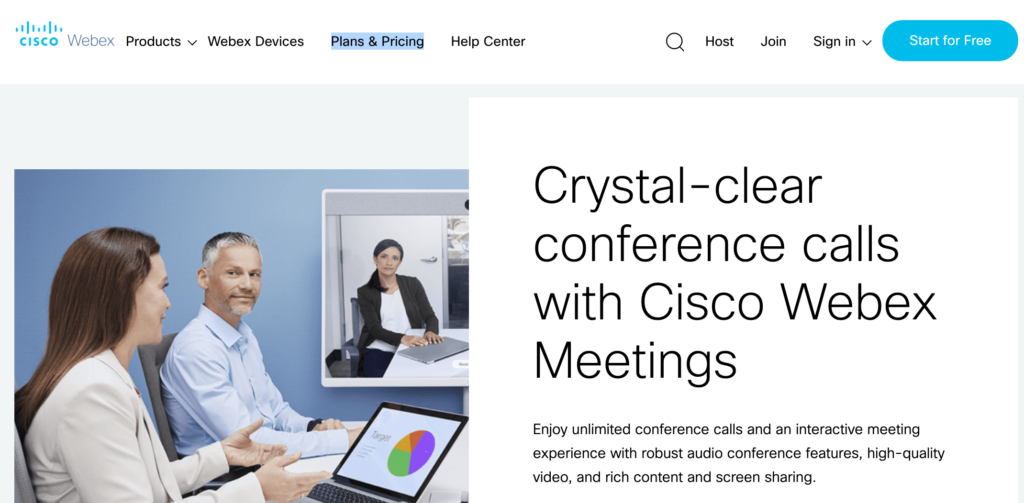
Premium plans include interactive whiteboarding, meeting recordings, and some helpful administrative features for larger organizations. Access controls and integrations allow you to collaborate with clients and stakeholders across a host of third-party applications and software.
Another very helpful collaboration tool is Webex Assistant, an AI digital assistant that takes notes, gives team members reminders, and also provides real-time transcriptions, closed captions, and even translations.
This is great for teams that have folks who speak other languages, are hearing impaired, or would like an accurate record for meeting minutes.
Here’s an overview of the four different plans offered by Webex:
Webex Suite – Basic
- Free
- Up to 100 participants
- Calls capped at 50 minutes
Webex Suite – Business
- Starting at $25 per license per month
- Up to 200 participants
- Calls capped at 24 hours
- 10 GB of cloud storage
Webex Suite – Enterprise (a customized premium plan)
- Contact sales for pricing
- Calls capped at 24 hours
- Customizable meeting lengths, storage, and features
Webex Meet Plan
- Starting at $15 per license per month
- Up to 200 participants
- Calls capped at 24hours
- 10 GB of cloud storage
- Premium meeting features
Webex Call Plan
- Starting at $17 per license per month
- Up to 100 participants
- Calls capped at 50 minutes
- 10 GB of cloud storage
- Premium calling features
Many companies are going to be fine with the free plan, especially if they are only using conferencing for internal communications. It’s incredibly secure and surprisingly feature-rich for a freemium product.
The Webex Meet Plan is very attractive if you are looking for a little bit more than what the freemium plan offers. You’ll have the ability to record and store meetings directly to the cloud, run a livestream on Facebook, or hold a full Q&A session with a panel of speakers.
If you are in the market for new conference calling software, it’s worth giving Webex a look. The free plan holds its own against anything else I’ve recommended, and the product only gets more powerful from there.
How to Find the Best Conference Call Service for You
Compare Quotes From The Best Conference Call Services
Get matched up with a conference call service that fits your specific needs.
To narrow down your choices, you need to know what to look for when you’re evaluating a potential service.
This is the methodology that we used when researching the solutions in this guide. We benchmarked each of the conference call services against these criteria.
Now, you can use it to help inform your choices.
Number of Participants
The maximum amount of participants is a crucial element to keep in mind. In fact, these limits are the most important numbers when it comes to which plan you ultimately choose.
Some free plans will limit you to just 10 participants and 40 minutes per conference call, while other paid options give you up to 1,000 participants with no limits on call duration.
Pick a service based on what you need. If you have a small business with just a handful of remote employees, you probably don’t need to pay for a conference call service with a limit of 250 participants.
Services with unlimited call durations are your best options. It won’t be effective or productive if you’re forced to cut meetings short based on these limitations.
For example, RingCentral and Zoom are great options if you’re a scrappy entrepreneur looking to host smaller conference calls with your clients. They both give you a free plan that allows 40 minutes for up to 100 participants.
Their paid plans give you even more allowed participants (e.g. Zoom gives you up to 300 participants with their Business plan) with longer call durations.
Whereas a service like Google Meet, which is entirely free, gives you just 25 people max—but call times are unlimited.
Video Conferencing
Businesses are turning to video conferencing now more than ever. In the wake of the global pandemic, it’s been an indispensable tool for schools, businesses, families, friends, and more.
That’s why you should put a premium on a conferencing service that includes video. Not just that, but they also need to include tools that help enhance your experience.
This might include collaboration tools such as screen sharing and audio sharing, text chats for collaborative communication, and whiteboard tools like the ability to write on the screen.
Tools like Dialpad Meetings and Zoom (pictured below) all give you those tools for easy collaboration.
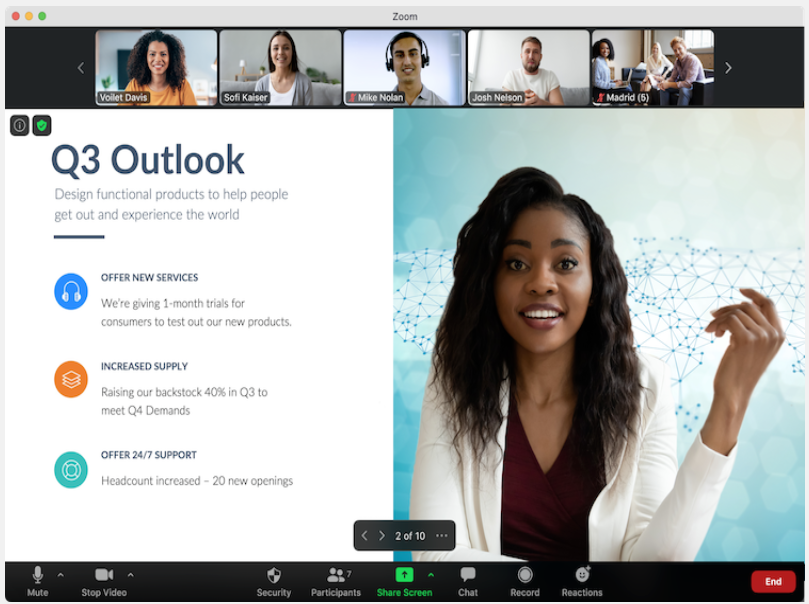
Certain conference call services specialize in video calls. So if you’re planning to use video for the majority of your calls, look for an option that specializes in this area.
Many of the options on this list offer one form of video conferencing or another. However, an offering like Grasshopper only focuses on audio calls and conferencing. If you’re looking for video, you’ll have to turn elsewhere.
Video and Audio Quality
If you’re making calls over the internet, you need a strong connection. It’s not that voice calls put a huge strain on the network–they don’t–it’s that any delay or lag in the connection is a big deal.
When you’re downloading a file, a slight lag is no concern. But when you’re trying to have a conversation, the loss of quality leads to miscommunications. It’s frustrating trying to talk to a single person, and nearly impossible to hold a productive conference call.
You can test your connection right on Nextiva’s website, simulating up to 200 phones.
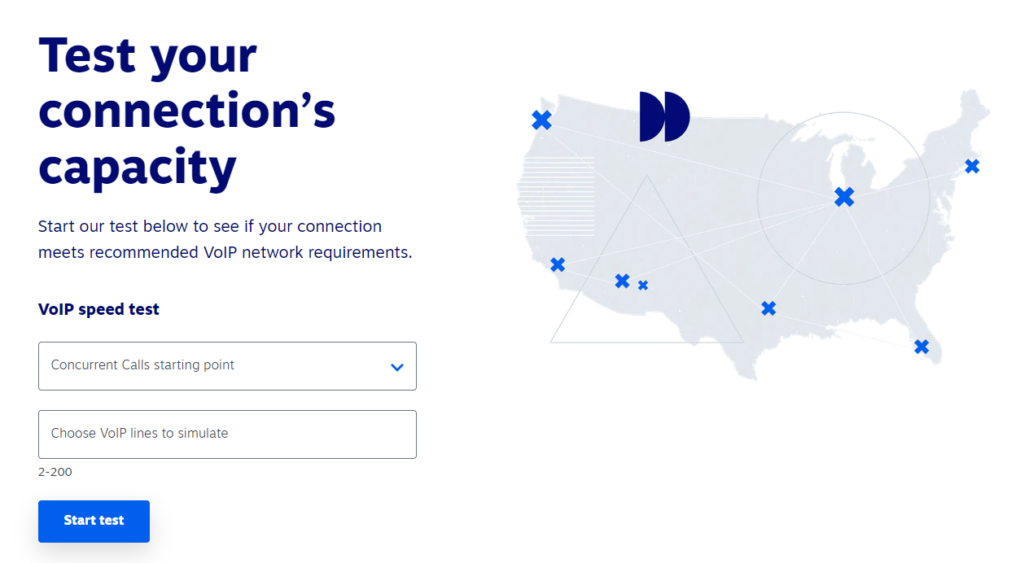
But even if the internet connection is solid, there’s still potential issues with call quality that the best conference call services can help you address.
Some tools and features to keep an eye out for:
- On-demand mute buttons for both the participant and the host. This gives everyone more control over their sound and can avoid any unwanted, distracting noise.
- Voice cancellation. Some video conferencing services cut out certain voices if they overlap with one another (e.g. Zoom) while others allow you to hear everyone talking at once (though you might not understand them in the cacophony).
- Echo prevention. The audio in a cavernous or empty room can be difficult to listen to. Some services are able to limit the amount of echo through their platforms.
The only way to really know how good the call quality will be is to test it out. Take advantage of any free trials offered by a provider and use it as much as possible to see if you’re happy with the results.
In our research, we found that RingCentral offers the best overall quality if you’re looking for a solid UCaaS platform. From phone calls to video conferencing, they offer consistent, HD-quality audio and video services. If you’re looking for one system to handle both your businesses phones and video calls, they’re definitely a top consideration.
When it comes to purely video calls, though, we found that Zoom offered the best overall quality. The picture tended to be the clearest and (depending on your web connection) rarely encountered any lag or dropped calls. The audio was also very clear.
However, they have a feature that automatically mutes certain audio when people talk over each other. That can be good or bad as it helps lessen the chaos of big meetings but can result in dropped dialogue.
Call Recording
The ability to record your conference calls is another big advantage. Not every free service comes with this option.
There are different levels of call recording capability. Some services will record the call and then force you to store it locally on whatever device you’re using. Others have cloud storage options, based on your plan.
Make sure you understand any storage limits before you sign up for a plan. Otherwise, you might be forced to upgrade when you run out of space.
It’s also worth noting that some call recording plans also come with transcription services. This will make it easier for you to go back and find certain points within a call without having to search through the audio.
If you’re going to take advantage of video calling features, see if the service records the videos or if the recording is just limited to audio calls only.
The ability to share the recorded calls later is also crucial. See what file type the recorded calls are downloaded under and make sure they’re easily shared with others.
Good conference call services like Dialpad make it easy to store and share recordings and will even create a transcript of the recording if you need it. Sharing these recordings takes a few clicks.
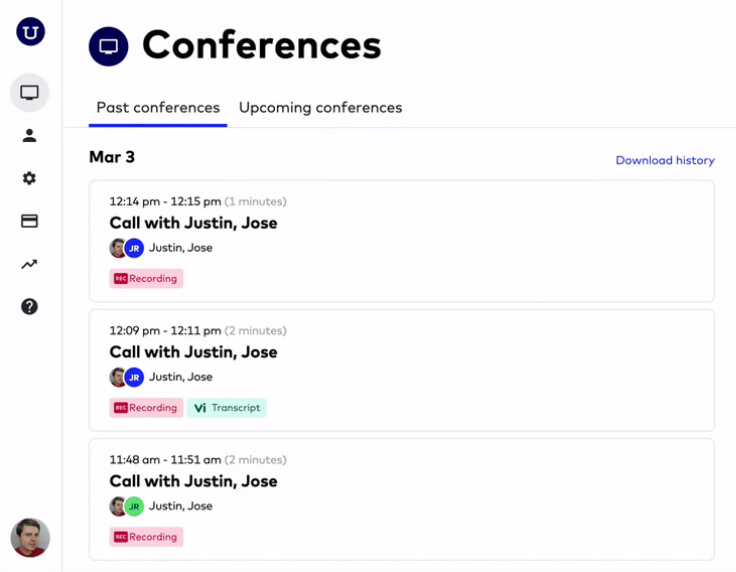
Zoom, and GoToMeeting also offer great call recording features. Webex doesn’t record your video or audio, but they do offer call transcription services.
Call Scheduling and Setup
Nothing’s worse than a confusing back-and-forth between you and the person you want to talk to about how you’re going to meet. That’s why being able to easily schedule and set up calls is the foundation of any good conference call service.
Good platforms integrate with your favorite calendar app and put the call on your schedule with a few clicks. These integrations are key to simplifying your scheduling processes.
For example, Google Meet does this with its easy Google Calendar integration. It also automatically connects with your Gmail account so you can easily schedule calls with your existing contacts.
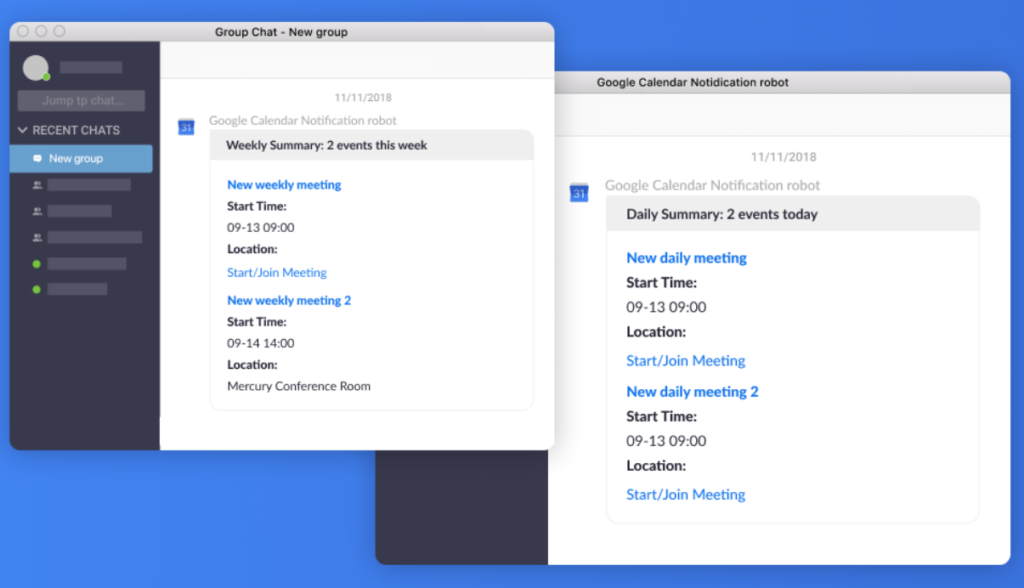
Zoom (pictured above) also has integrations with Google Calendar, Office 365, and iCal. You’ll be able to schedule the day, time, and location (e.g. Zoom room link) and then send an invitation to call participants via email.
Adding new users to a call should also be as simple as sending them a link to the conference “room.” If it’s any more complicated than that, you might want to look elsewhere.
It’s worth mentioning that signing up for some conference calling services shouldn’t take more than seconds to complete. For example, if you’re a G Suite user, all you need to do is navigate to Google Meet to use it.
The Top Conference Call Services in Summary
All conference call services offer the same core functions. But the best conference call solutions stand out with collaboration tools, high-quality video, crystal-clear audio, and other valuable features.
Factors like team size, budget, and primary use case should also be taken into consideration here. A startup with five employees won’t need the same solution as a mid-sized company hosting webinars with hundreds of attendees.
from Quick Sprout https://www.quicksprout.com/best-conference-call-services/
via IFTTT

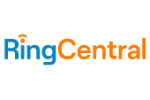
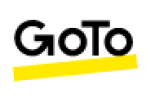

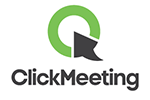


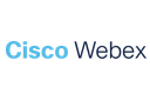
No comments:
Post a Comment